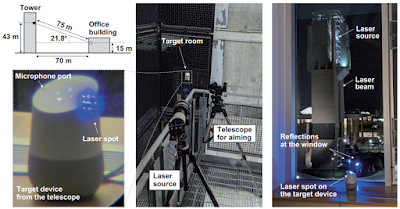 |
| Image Source : news.microsoft.com |
SRL Diagnostics is the largest diagnostics laboratory in India and they receive around 100,000 pap smear samples every year. A cytopathologist in their Mumbai laboratory alone screens around 200 slides for cervical cancer every day in addition to 100 other slides for other types of cancer.
To solve the problem of the low proportion of cytopathologists available, SRL Diagnostics partnered with Microsoft to create an AI network that would have an API to enable screening out of normal slides, so that the cytopathologists could concentrate on the abnormal slides. This would give a huge boost in the overall speed of screening as only 2% of all samples turn out to be abnormal and need deeper analysis.
To develop the AI algorithm, cytopathologists studied digitally scanned versions of Whole Slide Imaging (WSI) slides manually and recorded their observations, which in turn was used as training data for the AI model. Initially only one cytopathologist was assigned by SRL Diagnostics but since each WSI consists of 1800 tile images, this task proved to be too burdensome for an individual. The matter of subjectivity was also something the AI algorithm had to adjust for.
To develop the AI algorithm, cytopathologists studied digitally scanned versions of Whole Slide Imaging (WSI) slides manually and recorded their observations, which in turn was used as training data for the AI model. Initially only one cytopathologist was assigned by SRL Diagnostics but since each WSI consists of 1800 tile images, this task proved to be too burdensome for an individual. The matter of subjectivity was also something the AI algorithm had to adjust for.
 |
| A digitally scanned image of a WSI slide, used to train the AI model. | Source : news.microsoft.com |
“Different
cytopathologists examine different elements in a smear slide in a unique manner
even if the overall diagnosis is the same. This is the subjectivity element in
the whole process, which many a time is linked to the experience of the
expert,” reveals Dr. Arnab Roy, Technical Lead New Initiatives & Knowledge Management, SRL Diagnostics
To address the burden of volume, five cytopathologists were assigned to the task across multiple labs in different locations. This lead to thousands of tile images of cervical smear being annotated. Discordant and concordant notes were created for each sample image. Each sample image with discordant notes from a minimum of three cytopathologists were then sent to senior cytopathologists. This is how the issue of subjectivity was handled.
This is the
first such AI-Device-Labs setup in the Histopathology space in this part of the
world and impacts the entire spectrum of stakeholders. For patients, it reduces
the turnaround time for diagnosis and onset of treatment. It lends better
productivity and accuracy to the efforts of cytopathologists. For doctors, it
offers insights that inspire more qualitative treatment decisions.
“With the growing burden of cancer, there is a need to quickly and accurately analyze the samples to help clinicians arrive at a diagnosis faster and with a higher degree of objectivity. The work done by the SRL-Microsoft consortium in developing deep learning-based algorithms as an assistive tool in a relatively short span of time, speaks volumes about the capabilities of both the partners. This particular cervical cancer AI API shall be useful in screening liquid-based cytology slide images, unlocking precious dead-time of the pathologists enabling them to report more cases and/or focus more on complicated cases,” adds Arindam Haldar, CEO, SRL Diagnostic.
“With the growing burden of cancer, there is a need to quickly and accurately analyze the samples to help clinicians arrive at a diagnosis faster and with a higher degree of objectivity. The work done by the SRL-Microsoft consortium in developing deep learning-based algorithms as an assistive tool in a relatively short span of time, speaks volumes about the capabilities of both the partners. This particular cervical cancer AI API shall be useful in screening liquid-based cytology slide images, unlocking precious dead-time of the pathologists enabling them to report more cases and/or focus more on complicated cases,” adds Arindam Haldar, CEO, SRL Diagnostic.
In August this year SRL Diagnostics launched an internal preview of the API. In a span of three to six months the AI model will be put through rigorous clinical validation protocols. More than half a million anonymized digital tile images will be used in this exercise, making it one of the largest of its kind. Following internal validation, the API will be used in external cervical cancer diagnostics, including hospitals and other diagnostic centers.
This is one of the latest news about Microsoft using the power of AI to solve real world problems in India. Last week they had announced how their HAMS project was helping to automate driving tests in India. You can read about that project here.


